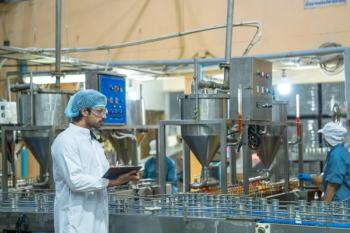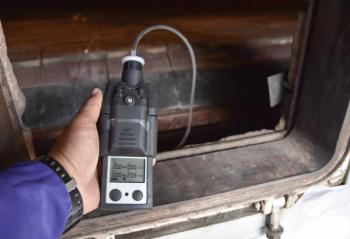
Celebrating National Space Day with Spectroscopy
Join us in celebrating National Space Day! Today, Spectroscopy magazine is teaming up with the Society for Applied Spectroscopy (SAS) to honor National Space Day and highlight the latest advancements in space exploration.
Spectroscopic techniques have played a role in advancing space exploration applications, including
Explore our curated collection of content delving into the captivating world of outer space, featuring expert insights from those who have contributed to groundbreaking projects like the James Webb Space Telescope, the Curiosity Rover, and beyond.
Ready to dive deeper into the science of Mars? Subscribe to
Expert Interviews
The Perseverance rover is equipped with many cameras and different instruments to conduct scientific experiments on Mars, including several spectrometers. We describe some of them here.
Macarena Garcia Marin, an astrophysicist and instrument scientist for the European Space Agency, highlights the role spectroscopy techniques have played in the pivotal research done on the James Webb Telescope since its launch in 2021.
In this interview, S. Michael Angel, a consultant on the SuperCam team, explains how the instrument analyzes Martian rocks and what it reveals about Mars’ geology and potential for past life.
The Role of LIBS and Mass Spectrometry in Planetary Exploration: An Interview with Kelsey Williams
In this extended Q&A interview, we sit down with Kelsey Williams, a postdoctoral researcher at Los Alamos National Laboratory (LANL), who is working on planetary instrumentation using spectroscopic techniques such as laser-induced breakdown spectroscopy (LIBS) and laser ablation molecular isotopic spectrometry (LAMIS).
The Role of LIBS and Mass Spectrometry in Planetary Exploration: An Interview with Kelsey Williams, Part I - In Part I of our interview with Williams, she discusses how her background led her to her current position at LANL.
The Role of LIBS and Mass Spectrometry in Planetary Exploration: An Interview with Kelsey Williams, Part II - In Part II of our conversation with Williams, she talks about the potential of mass spectrometry (MS) in space exploration applications.
The Role of LIBS and Mass Spectrometry in Planetary Exploration: An Interview with Kelsey Williams, Part III - In Part III, Williams goes into detail about ChemCam and SuperCam and how LIBS is used in both these instruments.
The Role of LIBS and Mass Spectrometry in Planetary Exploration: An Interview with Kelsey Williams, Part IV - In the final part of our conversation with Williams, she discusses how laser-based spectroscopic techniques might be used in the future to advance space exploration.
Noureddine Melikechi, dean of the Kennedy College of Sciences at the University of Massachusetts Lowell, discusses his work analyzing spectroscopic data collected by the Chemistry Camera (ChemCam) aboard NASA’s Curiosity Rover.
Exploring the Universe with Spectroscopy: An Interview with Gabi Wenzel of the Center for Astrophysics
Spectroscopy sat down with Gabi Wenzel, SAO visiting scientist at the Center for Astrophysics, Harvard & Smithsonian, to discuss how spectroscopy is being used to explore the molecular universe. In this 4-part video interview, she discusses everything from important breakthroughs in her work to the interdisciplinary nature of astrochemistry. Watch all five parts below.
- Part 1:
Exploring the Molecular Universe with Spectroscopy - Part 2:
Exploring the Advantages of High-Resolution Cavity-Enhanced FTMW Spectroscopy - Part 3:
Unexpected Discoveries in Space - Part 4:
Astrochemistry at the Intersection of Disciplines
A paper by Diriba Gonfa Tolasa of the Department of Physics at Assosa University (Assosa, Ethiopia) explores the pivotal role of spectroscopic techniques in probing celestial phenomena, enabling researchers to decode the composition, temperature, density, and motion of astronomical objects through the analysis of spectral lines. For this year’s National Space Day, Tosala spoke to Spectroscopy about his paper.
Research was conducted exploring the dehydration pathways of gypsum (CaSO₄·2H₂O) and its interactions with chloride (Cl) salts under a range of thermal and environmental conditions relevant to Earth and Mars. Spectroscopy spoke to Merve Yeşilbaş, corresponding author of a paper based on this work, about the research.
Spectroscopy and Space Exploration: The Latest Research
References
- Wetzel, W. Spectroscopy and Space Exploration: A One-Day Content Series on July 20th. Spectroscopy. Available at:
https://www.spectroscopyonline.com/view/spectroscopy-and-space-exploration-a-one-day-content-series-on-july-20th (accessed 2025-04-17). - National Aeronautics and Space Administration, Spectroscopy. NASA.gov. Available at:
https://science.nasa.gov/mission/hubble/science/science-behind-the-discoveries/hubble-spectroscopy/ (accessed 2025-04-17).
Newsletter
Get essential updates on the latest spectroscopy technologies, regulatory standards, and best practices—subscribe today to Spectroscopy.





